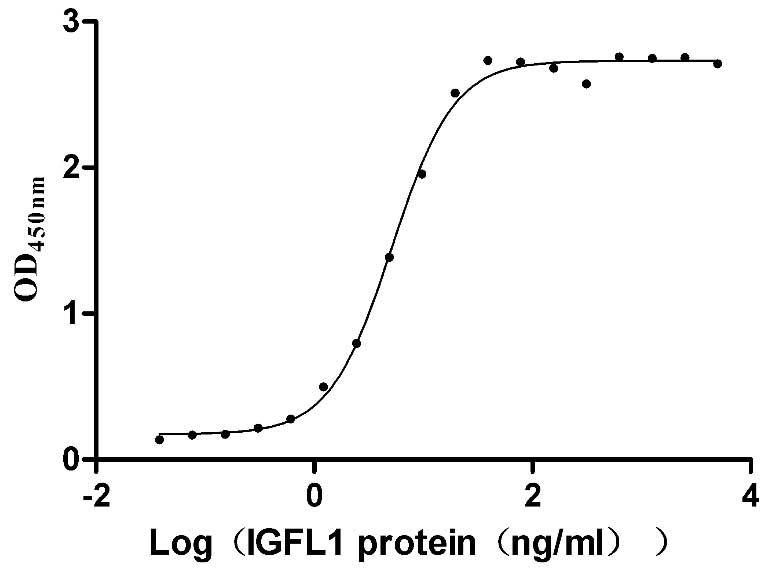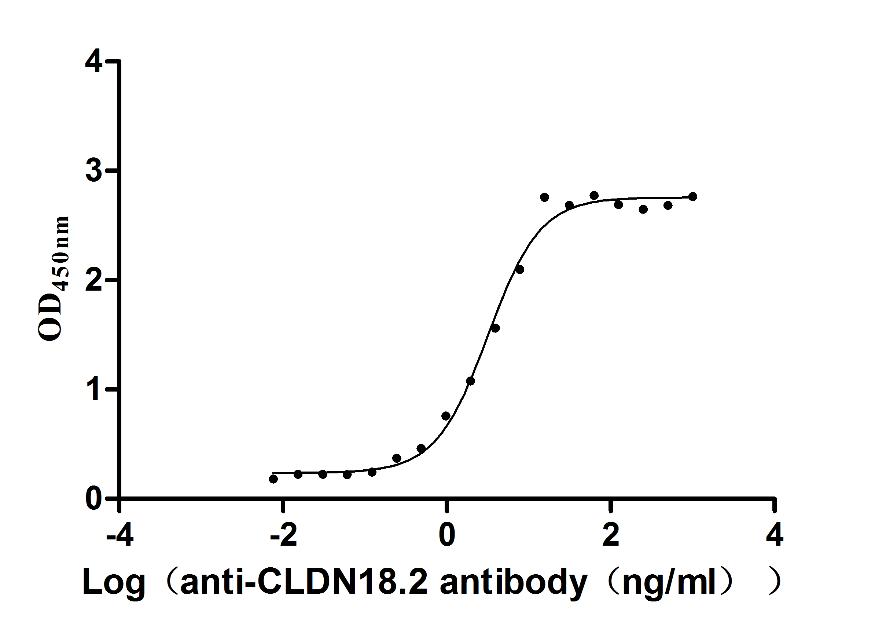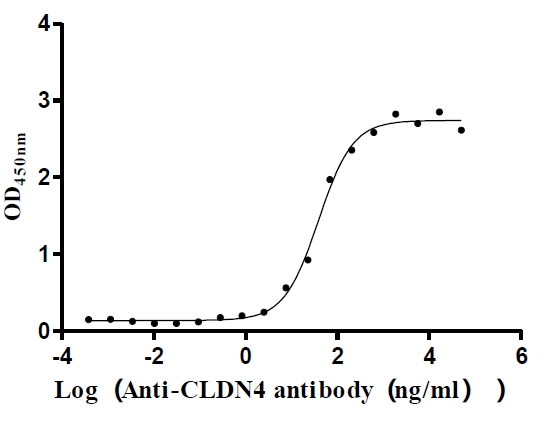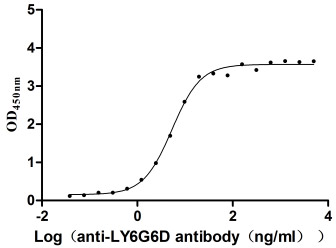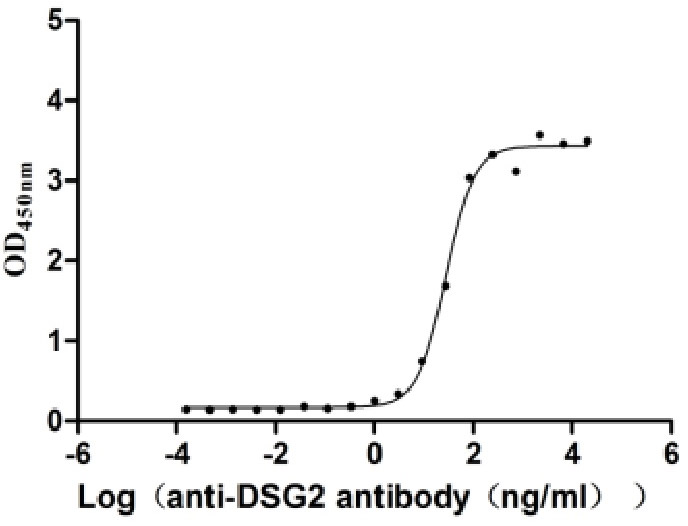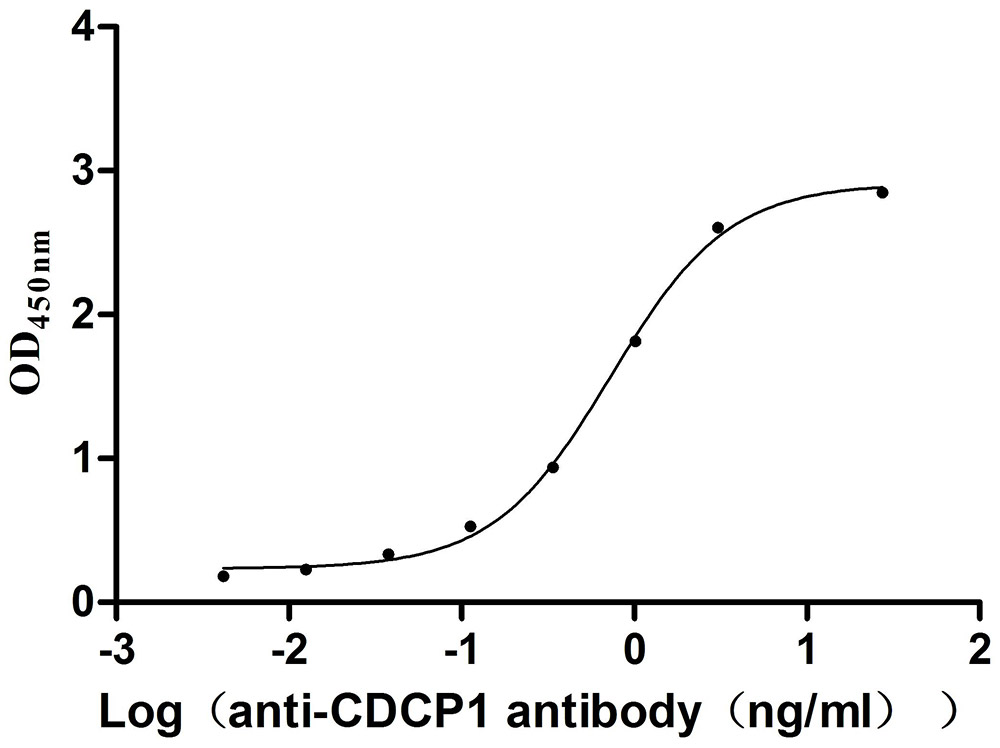Recombinant Human Keratin, type I cytoskeletal 9 (KRT9)
-
中文名稱:人KRT9重組蛋白
-
貨號:CSB-YP012587HU
-
規格:
-
來源:Yeast
-
其他:
-
中文名稱:人KRT9重組蛋白
-
貨號:CSB-EP012587HU
-
規格:
-
來源:E.coli
-
其他:
-
中文名稱:人KRT9重組蛋白
-
貨號:CSB-EP012587HU-B
-
規格:
-
來源:E.coli
-
共軛:Avi-tag Biotinylated
E. coli biotin ligase (BirA) is highly specific in covalently attaching biotin to the 15 amino acid AviTag peptide. This recombinant protein was biotinylated in vivo by AviTag-BirA technology, which method is BriA catalyzes amide linkage between the biotin and the specific lysine of the AviTag.
-
其他:
-
中文名稱:人KRT9重組蛋白
-
貨號:CSB-BP012587HU
-
規格:
-
來源:Baculovirus
-
其他:
-
中文名稱:人KRT9重組蛋白
-
貨號:CSB-MP012587HU
-
規格:
-
來源:Mammalian cell
-
其他:
產品詳情
-
純度:>85% (SDS-PAGE)
-
基因名:
-
Uniprot No.:
-
別名:CK 9; CK-9; Cytokeratin 9; Cytokeratin-9; Cytokeratin9; EPPK; K1C9_HUMAN; K9; Keratin 9; Keratin; Keratin type I cytoskeletal 9; Keratin-9; Keratin9; KRT 9; Krt9; Spermatid Perinuclear Ring Manchette Protein K9; type I cytoskeletal 9
-
種屬:Homo sapiens (Human)
-
蛋白長度:Full length protein
-
表達區域:1-623
-
氨基酸序列MSCRQFSSSY LSRSGGGGGG GLGSGGSIRS SYSRFSSSGG GGGGGRFSSS SGYGGGSSRV CGRGGGGSFG YSYGGGSGGG FSASSLGGGF GGGSRGFGGA SGGGYSSSGG FGGGFGGGSG GGFGGGYGSG FGGFGGFGGG AGGGDGGILT ANEKSTMQEL NSRLASYLDK VQALEEANND LENKIQDWYD KKGPAAIQKN YSPYYNTIDD LKDQIVDLTV GNNKTLLDID NTRMTLDDFR IKFEMEQNLR QGVDADINGL RQVLDNLTME KSDLEMQYET LQEELMALKK NHKEEMSQLT GQNSGDVNVE INVAPGKDLT KTLNDMRQEY EQLIAKNRKD IENQYETQIT QIEHEVSSSG QEVQSSAKEV TQLRHGVQEL EIELQSQLSK KAALEKSLED TKNRYCGQLQ MIQEQISNLE AQITDVRQEI ECQNQEYSLL LSIKMRLEKE IETYHNLLEG GQEDFESSGA GKIGLGGRGG SGGSYGRGSR GGSGGSYGGG GSGGGYGGGS GSRGGSGGSY GGGSGSGGGS GGGYGGGSGG GHSGGSGGGH SGGSGGNYGG GSGSGGGSGG GYGGGSGSRG GSGGSHGGGS GFGGESGGSY GGGEEASGSG GGYGGGSGKS SHS
-
蛋白標簽:Tag?type?will?be?determined?during?the?manufacturing?process.
The tag type will be determined during production process. If you have specified tag type, please tell us and we will develop the specified tag preferentially. -
產品提供形式:Lyophilized powder
Note: We will preferentially ship the format that we have in stock, however, if you have any special requirement for the format, please remark your requirement when placing the order, we will prepare according to your demand. -
復溶:We recommend that this vial be briefly centrifuged prior to opening to bring the contents to the bottom. Please reconstitute protein in deionized sterile water to a concentration of 0.1-1.0 mg/mL.We recommend to add 5-50% of glycerol (final concentration) and aliquot for long-term storage at -20℃/-80℃. Our default final concentration of glycerol is 50%. Customers could use it as reference.
-
儲存條件:Store at -20°C/-80°C upon receipt, aliquoting is necessary for mutiple use. Avoid repeated freeze-thaw cycles.
-
保質期:The shelf life is related to many factors, storage state, buffer ingredients, storage temperature and the stability of the protein itself.
Generally, the shelf life of liquid form is 6 months at -20°C/-80°C. The shelf life of lyophilized form is 12 months at -20°C/-80°C. -
貨期:Delivery time may differ from different purchasing way or location, please kindly consult your local distributors for specific delivery time.Note: All of our proteins are default shipped with normal blue ice packs, if you request to ship with dry ice, please communicate with us in advance and extra fees will be charged.
-
注意事項:Repeated freezing and thawing is not recommended. Store working aliquots at 4°C for up to one week.
-
Datasheet :Please contact us to get it.
靶點詳情
-
功能:May serve an important special function either in the mature palmar and plantar skin tissue or in the morphogenetic program of the formation of these tissues. Plays a role in keratin filament assembly.
-
基因功能參考文獻:
- A novel heterozygous c.1369C>T transition (p.Leu457Phe) in exon 6 of the KRT9 gene was identified in four patients in a Chinese Family with Epidermolytic Palmoplantar Keratoderma. PMID: 29719290
- During analyzing the sequences of KRT9 gene of a epidermolytic palmoplantar keratoderma (EPPK) pedigree, we found a new heterozygous missense mutation (488G>T) of exon 1 of KRT9 gene, which has not been reported before and does not exist in healthy individuals of the family and 100 unrelated individuals. PMID: 27726289
- Results identified the missense mutation KRT9 c.487C>T, as a potential causative mutation in the large Uygur family with epidermolytic palmoplantar keratoderma. PMID: 27864007
- KRT9 expression is significantly downregulated in human masticatory mucosa during wound healing PMID: 28005267
- Findings suggest that dysregulated Keratin 9 expression is a consequence of Alzheimer's disease (AD). PMID: 26973255
- Mutational analysis revealed a T to G transition in the coding DNA sequence, designated as c.470T>G (p.Met157Arg), a missense mutation in exon 1 of KRT9 in the proband and her brother, but not in unrelated healthy controls. PMID: 24899405
- KRT9 gene mutation as a reliable indicator in the prenatal molecular diagnosis of epidermolytic palmoplantar keratoderma. PMID: 24862219
- A heterozygous missense mutation c.482A to G in the KRT9 gene. PMID: 24510562
- Our findings indicate that knuckle pads can be associated with epidermolytic palmoplantar keratoderma and the R163W mutation in a family with a genetic background different from that described here. PMID: 23278372
- We identified a novel Eidermolytic Palmoplantar Keratoderma-causing mutation located in a region of the KRT9 gene, encoding a poorly conserved region of the protein that is not routinely screened for diagnostic purposes. PMID: 23397986
- Data indicate that the node tumour burden could be accurately quantified based on the cytokeratin 19 (CK19) mRNA copy number. PMID: 23265708
- A heterozygous transversional mutation, 488G-->A, was identified in exon 1 of KRT9 gene in all patients. PMID: 22678789
- A substitution in arginine alters the charge and shape of KRT9 rod domain, disrupting the function of the helix initiation motif of keratins and compromising the integrity of filaments and weakening their stability in the epidermis of palms and soles. PMID: 22262370
- KRT9 may play a complicated role in the genesis of epidermolytic palmoplantar keratoderma with knuckle pads and camptodactyly. PMID: 21715251
- Study provides evidence that epidermolytic palmoplantar keratoderma in a large Chinese family may result from a novel duplication mutation (c.495_503dupCTCTTACTT) in the 1A rod domain of KRT9. PMID: 21489919
- identified mRNA transcripts from three genes CDSN, LOR and KRT9, showing strong over-expression in skin samples relative to samples from forensic body fluids, making them suitable markers for skin identification PMID: 21221983
- A c.T1206C substitution in the 2B domain of KRT 9 was identified. PMID: 20964665
- The affected members of all five families possess mutations in the KRT9 gene that severely affect heterodimer formation with the type II keratin partner. PMID: 19874353
- Genetic studies have revealed that K9 gene mutations are responsible for epodermolytic palmoplantar keratoderma. PMID: 12532041
- Keratin 9 is mutated in epidermolytic palmoplantar keratoderma PMID: 14675368
- Keratin 9 gene mutation is associated with diffuse palmoplantar keratoderma. PMID: 16043929
- A heterozygous nucleotide T-->C transition at position 500 in exon 1 of KRT9 was detected, which resulted in a leucine to serine (L167S) change. PMID: 17362238
- A missense mutation in keratin 9 -- Met157Arg in the 1A domain -- was found in a Chinese family with EPPK PMID: 18477167
- the first family from Northeast China affected by epidermolytic palmoplantar keratoderma (EPPK) in which we confirmed the presence of the N161S mutation as the result of a 548A>G transition in exon1 of the keratin 9 gene. PMID: 18573708
- We show that in a family affected by EPPK and knuckle pad keratosis, carrying the R163W substitution, wild type (wt) and mutated K9 are strongly expressed in knuckle pads. This suggests that the knuckle pad phenotype is due to ectopical expression of K9. PMID: 19106041
- The genomic DNA from the patient's peripheral blood showed an R162W mutation in the keratin 9 gene. We therefore diagnosed the patient with Vorner type EPPK. PMID: 19451521
- Prenatal diagnosis of epidermolytic palmoplantar keratoderma caused by c.T470C (p.M157T) of the keratin 9 gene. PMID: 19548225
顯示更多
收起更多
-
相關疾病:Keratoderma, palmoplantar, epidermolytic (EPPK)
-
蛋白家族:Intermediate filament family
-
組織特異性:Expressed in the terminally differentiated epidermis of palms and soles.
-
數據庫鏈接:
Most popular with customers
-
Recombinant Human Leukemia inhibitory factor (LIF) (Active)
Express system: Mammalian cell
Species: Homo sapiens (Human)
-
Recombinant Human T-cell surface protein tactile (CD96), partial (Active)
Express system: Mammalian cell
Species: Homo sapiens (Human)
-
Recombinant Human IGF-like family receptor 1 (IGFLR1), partial (Active)
Express system: Mammalian cell
Species: Homo sapiens (Human)
-
Recombinant Macaca fascicularis Claudin 18.2 (CLDN18.2)-VLPs (Active)
Express system: Mammalian cell
Species: Macaca fascicularis (Crab-eating macaque) (Cynomolgus monkey)
-
Recombinant Human Claudin-4 (CLDN4)-VLPs (Active)
Express system: Mammalian cell
Species: Homo sapiens (Human)
-
Recombinant Macaca fascicularis lymphocyte antigen 6 family member G6D (LY6G6D) (Active)
Express system: Yeast
Species: Macaca fascicularis (Crab-eating macaque) (Cynomolgus monkey)
-
Recombinant Human Desmoglein-2 (DSG2), partial (Active)
Express system: Mammalian cell
Species: Homo sapiens (Human)
-
Recombinant Mouse CUB domain-containing protein 1 (Cdcp1), partial (Active)
Express system: Mammalian cell
Species: Mus musculus (Mouse)


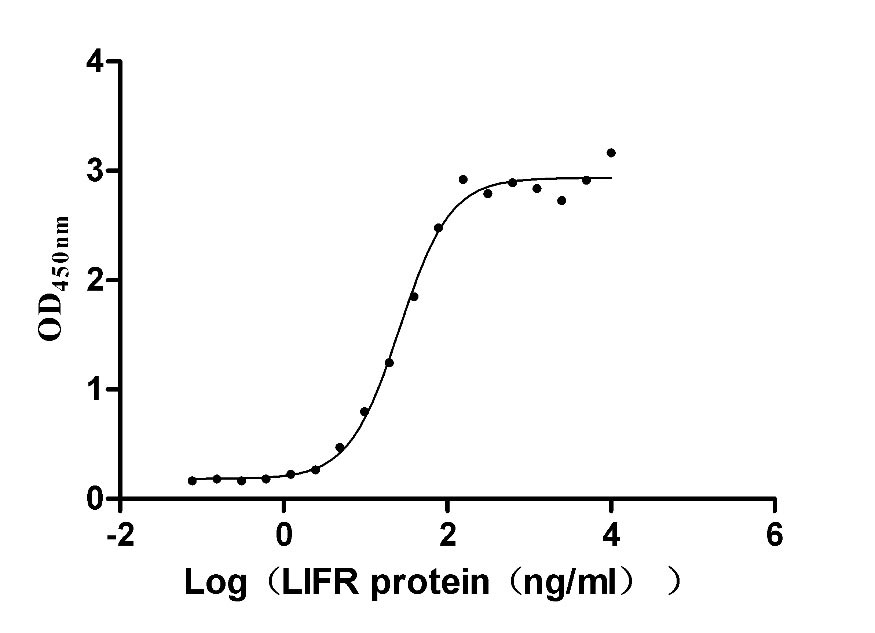
-AC1.jpg)
